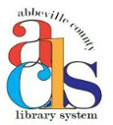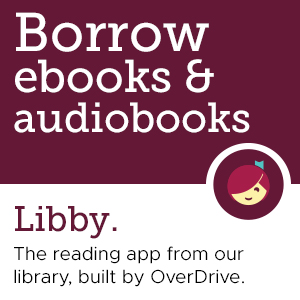Reviews
Horn Book
(c) Copyright The Horn Book, Inc., a wholly owned subsidiary of Media Source, Inc. No redistribution permitted.
This third collaboration about an endearing food staple features John's and Oswald's trademark humor-wrapped-around-a-message that made The Bad Seed and The Good Egg (rev. 3/19) so entertaining. This time it's a cool-is-in-the-eye-of-the-beholder tale starring three beans (cool ones, natch) who rule the school, and our wide-eyed, bow-tie-wearing protagonist who used to be their friend "in the olden days, last year." Our bean tries to earn a place in the lima-light: "I wore sunglasses...I slicked my hair back," but the changes don't feel right. The misfit bean resigns itself to loneliness ("I lived my life and things were just...okay") until some surprising acts of kindness cause it to reevaluate assumptions about its former--or are they?--BFFs. Witty wordplay ("I was officially a has-bean") and silly gags in the digital and watercolor illustrations (The Great Gatsbean, A Midsummer Night's Bean, Leguma Beach) help downplay the didacticism and up the cool factor. (c) Copyright 2021. The Horn Book, Inc., a wholly owned subsidiary of Media Source, Inc. No redistribution permitted.
Book list
From Booklist, Copyright © American Library Association. Used with permission.
The third in this New York Times best-selling series is as character-driven, pun-filled, and hilariously illustrated as its predecessors. This installment deals with what it means to be cool truly cool. The narrator, a yellowish legume with wide eyes, wispy hair, and a bow tie, is not cool. His former podmates, however, are. The three cool beans look like something out of Grease or West Side Story as they saunter down to their urban school wearing shades, one of them sporting a tight leather jacket. Oswald's watercolor and digital-paint illustrations create an involving, relatable school atmosphere throughout. As the cool beans flourish, our uncool narrator feels isolated. Then he suffers a series of mishaps, spilling his food all over his feet in the cafeteria. The low point comes when, after being called on to read in class but not hearing the teacher, he is jeered at by the other kids. But a tiny miracle arrives with each mishap as, each time, one of the cool beans quietly rescues him from humiliation. Our bean realizes the power of kindness, which, when a tiny bean drops his books in the hallway, he puts it into action, helpfully picking up the books. The last line Now that's cool drives the message home: all kids can be cool if they're kind.--Connie Fletcher Copyright 2020 Booklist
School Library Journal
(c) Copyright Library Journals LLC, a wholly owned subsidiary of Media Source, Inc. No redistribution permitted.
PreS-Gr 2—A bow tie–wearing chickpea attends school with a trio of really awesome beans. So awesome, that they are what most people would call "cool." All the beans used to be friends, but now they are seemingly too cool for the nerdy chickpea. Yet, the cool beans show that being kind and caring for others is the true way to demonstrate just how hip a person can be. The creative team behind The Bad Seed and The Good Egg deliver a comedic tale of trying to fit in among one's peers. The cool beans represent the archetypal popular kids in any school setting; they are able to play sports, rock out on a guitar, and even display the greatest art skills, making this story relatable to plenty of readers despite the picture book format. Additionally, the text is full of puns found in the tiny details on each page, which are sure to make older readers giggle, including "Leguma Beach" and "The Great Gatsbean." Younger readers will not miss out on the humor, as the illustrations are goofy and adorable. The chickpea's attempts to be cool fall flat, but after a couple mishaps, the other beans come to his aid. VERDICT This is a gentle, sweet story of how generosity and kindness are the true qualities to champion, and offers a great example for young readers and an important reminder for older readers. A strong addition to any collection.—Kaitlin Malixi, Kensington Health Sciences Academy, Philadelphia
Kirkus
Copyright © Kirkus Reviews, used with permission.
A supposed "has-bean" shows that coolness has more to do with deeds than demeanor.Offering further moral instruction in this leguminous cousin to The Bad Seed (2017) and The Good Egg (2019), Oswald portrays three beanseach a different species but all sporting boss shades, fly threads, and that requisite air of nonchalancebringing the cool to streets, hallways, playgrounds, and Leguma Beach. Meanwhile, a fourth (a scraggly-haired chickpea), whose efforts to echo the look and the 'tude have fallen flat, takes on the role of nerdy narrator to recall "olden days" when they all hung out in the same pod. Still, despite rolling separate ways (nobody's fault: "That's just how it is sometimes. You spend less time together, even though you're not totally sure why"), when the uncool bean drops a lunch tray, skins a kid knee on the playground, or just needs a hint in class, one of the others is always on the scene toot suite. No biggie. And passing those casual acts of kindness forward? "Now that's cool." John's good-hearted text makes some hay with the bean puns while Oswald's pipe-stemmed limbs, googly eyes, and accessories give these anthropomorphic legumes lots of personality. As a fava to young audiences, pair with Jamie Michalak and Frank Kolar's Frank and Bean (2019) for a musical combination.Cool beans indeed. (Picture book. 6-9) Copyright Kirkus Reviews, used with permission.





